Rosacea is a chronic skin lesion with a characteristic permanent redness of the face and the presence of pustular eruptions. From Latin, the name of the disease is translated as "rosacea". because of his characteristic features.
The exact origin of the disease has not yet been clarified, only the factors that provoke its onset are known. Rosacea is associated with a sharp change in the hormonal background, especially during menopause, pathology of the endocrine system, long-term use of certain drugs (steroids), digestive diseases, Demodex activity, inadequate chemical peels, pathologies of the nervous and cardiovascular systems.
There are the following forms of rosacea: erythematous, (erythematous-telangiectatic), papulo-pustular, phymatous (infiltrative-productive) and ocular (ocular).
In the article estet-portal.com you can get acquainted in detail with the personal algorithm of therapy for a patient with rosacea of a dermatovenereologist, dermatocosmetologist, head and leading specialist in laser therapy of the MultiMed clinic, a certified trainer of the MultiMed SCHOOL company ; Roman Shkolny.
Dermatologist's algorithm for dealing with rosacea
R.Sh.: Unfortunately, such household diagnoses as “rosacea” and “demodecosis” appear in information resources much more often than real dermatological diagnoses, namely rosacea (ICD-10: L71). Hence the constant misunderstandings and differences in the tactics of managing such patients. Rosacea — it is primarily angioneurosis.
The work algorithm is based on modern protocols and evidence-based medicine data and involves the following steps:
1. Combination of azelaic acid and laser technologies (selective vascular lasers — Yellow Laser 577 nm) in erythematous-telangiectatic subtype.
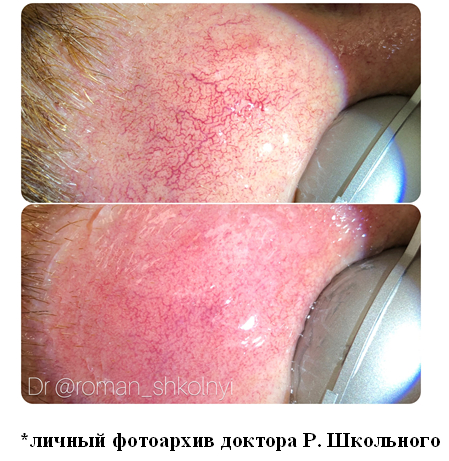
2. Prescribing antibacterial agents for papulo-pustular subtype of rosacea
In 2007, Lacey et al. isolated Bacillus Oleronius from a mite of the genus Demodex. Thus, for the greatest effect, in my practice I use the antibacterial drug doxycycline (100-200 mg / day), for a period of about 10-14 days. Alternative drugs are erythromycin and clarithromycin.
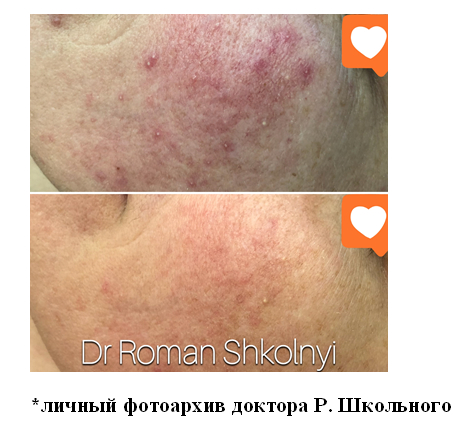
I rarely temporarily prescribe topical acaricides in the presence of demodicosis (scrape microscopy). When working with rosacea, it is important to understand that Demodex folliculorum and Demodex brevis mites are transitive flora and the mere presence of a tick is not a criterion for making a diagnosis. But their activity can worsen the clinical picture of rosacea. If necessary, acaricides should be included in the therapeutic plan. I prefer ivermectin cream for up to 8 weeks.
Acaricides — these are chemical or biological preparations of contact action for combating ticks.
There is a method of prescribing tablets of isotretionine for rosacea, but I practically do not resort to such tactics, preferring adapalene in the form of a gel for external use for a minimum period of 2 months.
3. Combating erythema
At this stage, it is important to determine the etiological factor and the pathogenetic mechanism of erythema. For example, with erythema of a neurogenic nature, one should resort to diluted botulinum therapy and consult a neurologist to optimize adequate sedative therapy.
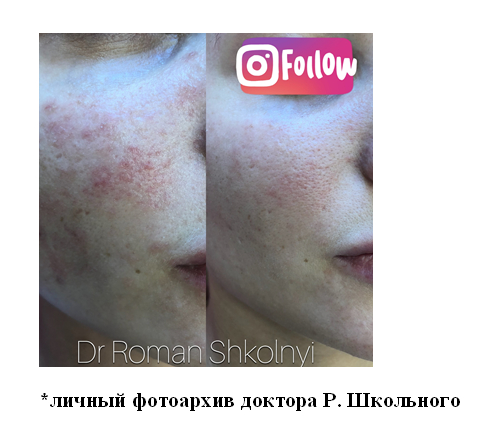
Persistent erythema and telangiectasia is a clear indication for selective vascular lasers (I use a 577nm diode laser). Please be extremely careful when prescribing topical highly selective α2-adrenergic agonists, which temporarily hide erythema due to vasoconstriction of small vessels in the dermis.
In difficult cases, use a dermatoscope to determine the cause of erythema — the presence of telangiectasias.
Watch the most interesting videos on our channel in Youtube
4. Prescribing topical calcineurin inhibitors
Separate topic — This is rosacea associated with the inappropriate use of topical corticosteroids with a high atrophogenic potential. In this case, it would be rational to temporarily prescribe topical calcineurin inhibitors.
The place of laser technologies and plasma therapy in the treatment of rosacea
R.Sh.: Of course, a comprehensive professional approach to working with rosacea is impossible without modern laser technologies:
- Introduction of laser technologies
Vascular lasers are used to remove telangiectasias and help restore the normal composition of the extracellular matrix. By removing telangiectasias, we also remodel the dermis. With papulo-pustular form of rosacea, the yellow laser allows you to quickly achieve remission.
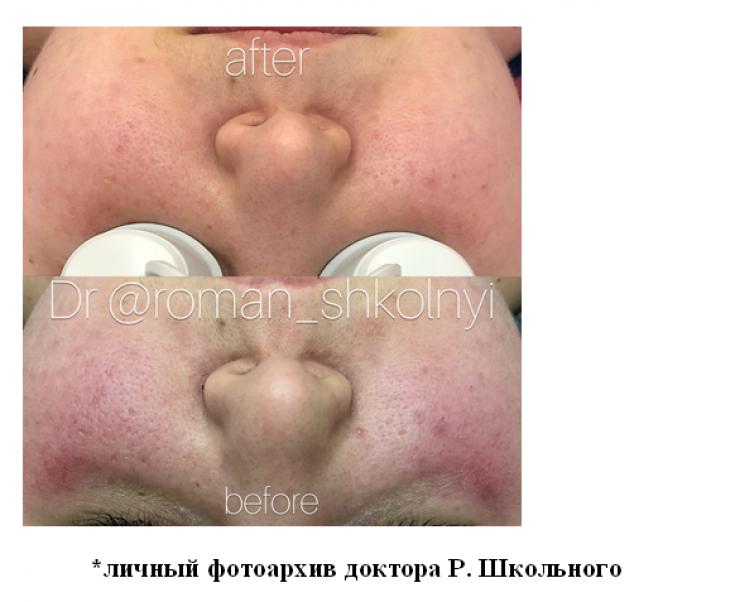
2. Introduction of platelet-poor plasma
An additional method is plasma therapy, however, this procedure should be used as carefully as possible, because excessive stimulation is unacceptable when working with rosacea and after at least two sessions of highly selective laser therapy, as well as against the background of classical drug therapy.
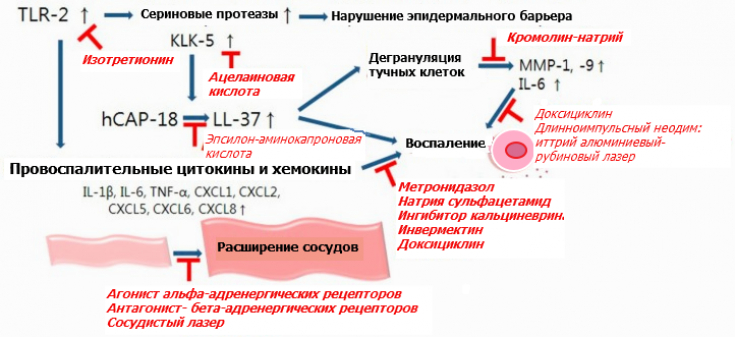
Platelet-poor plasma (PPP - platelet-poor plasma) regulates the activity of tissue proteases, has an anti-inflammatory effect, compensates for protein deficiency, providing building material for fibroblasts for collagen synthesis and activates their functional ability.
Complex therapy for rosacea should be repeated approximately every 6-12 months if it is due to the constitutional characteristics of the patient.
Thank you for staying with estet-portal.com. Read other interesting articles in the "Video" section. You might be interested in Rosacea Treatment: Debunking Popular Myths







Add a comment